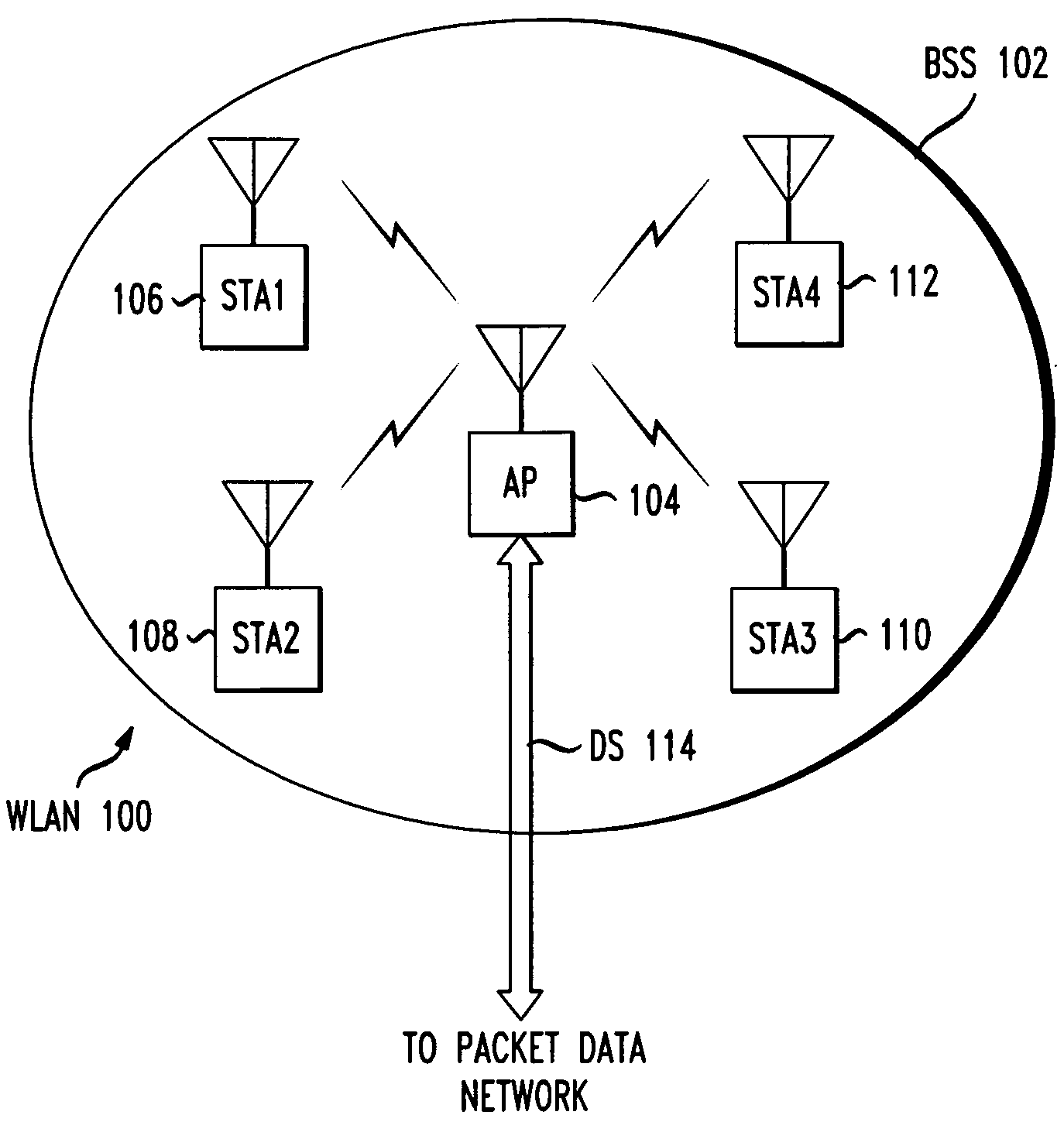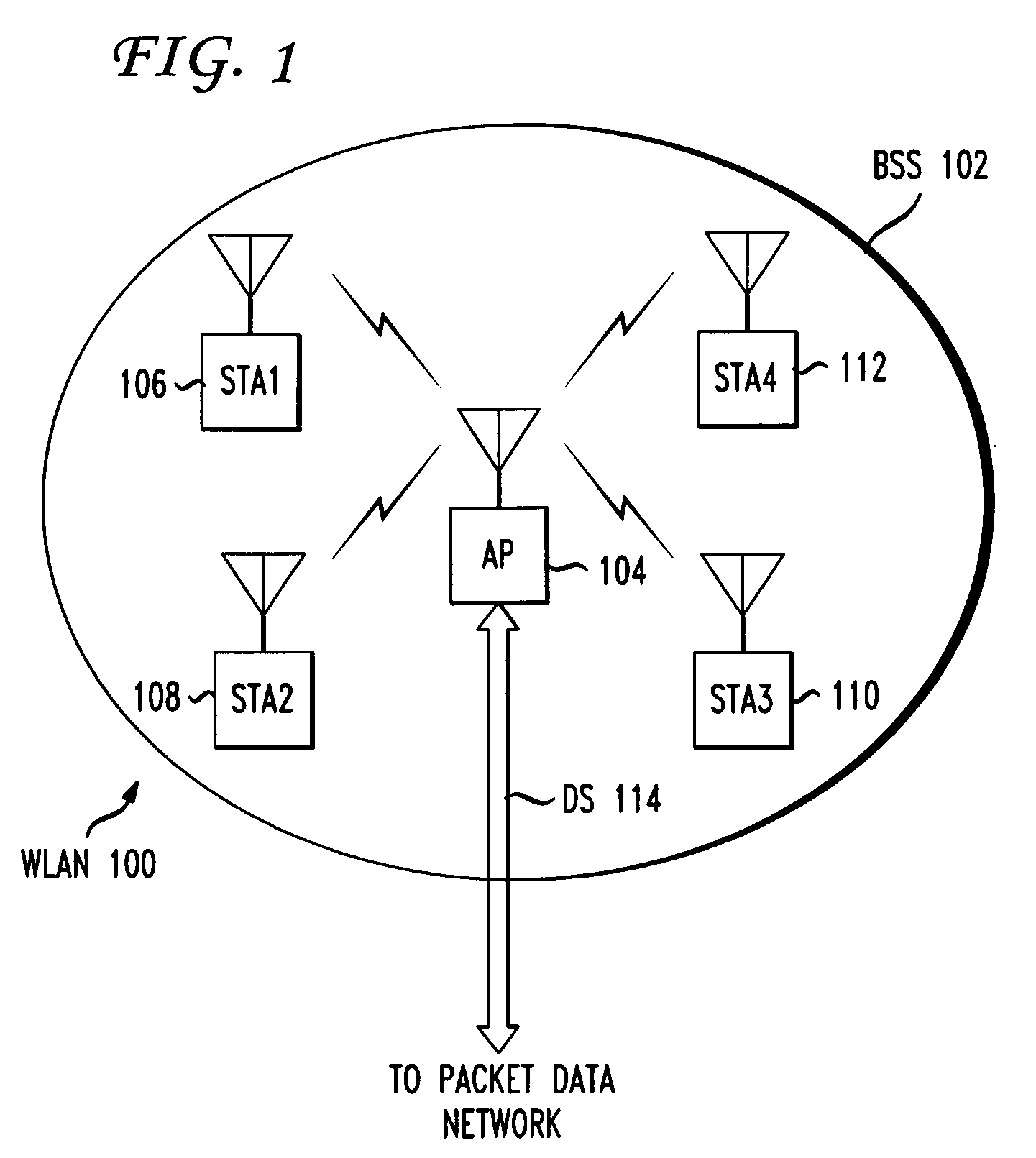Synchronizing wireless local area network access points
a wireless local area network and access point technology, applied in the direction of frequency-division multiplex, synchronisation arrangement, instruments, etc., can solve the problem that the transmission of two access points during the overlap period may have a high probability of colliding, so as to reduce, minimize, or eliminate the overlap
- Summary
- Abstract
- Description
- Claims
- Application Information
AI Technical Summary
Benefits of technology
Problems solved by technology
Method used
Image
Examples
Embodiment Construction
[0026]FIG. 1 shows the basic network architecture of WLAN 100 with a single access point AP 104. The nomenclature of the IEEE 802.11 standards is used herein. In a WLAN, any addressable device may be called a station (STA). Stations may be fixed, portable, or mobile. A portable STA is a device which is capable of being moved from place to place, such as a laptop which may be moved from one desk to another. During operation, however, a portable device is stationary. A mobile STA is a user device, such as a laptop or personal digital assistant, which is in actual motion during operation. In FIG. 1, four stations, STA1106-STA4112, are shown. The stations STA1106-STA4112 communicate over RF links with access point AP 104, which connects via distribution system DS 114 to a packet data network, details of which are not shown. An example of a distribution system is a wired Ethernet local area network (LAN).
[0027]An AP may be considered as a special class of STA. It provides management serv...
PUM
 Login to View More
Login to View More Abstract
Description
Claims
Application Information
 Login to View More
Login to View More - R&D
- Intellectual Property
- Life Sciences
- Materials
- Tech Scout
- Unparalleled Data Quality
- Higher Quality Content
- 60% Fewer Hallucinations
Browse by: Latest US Patents, China's latest patents, Technical Efficacy Thesaurus, Application Domain, Technology Topic, Popular Technical Reports.
© 2025 PatSnap. All rights reserved.Legal|Privacy policy|Modern Slavery Act Transparency Statement|Sitemap|About US| Contact US: help@patsnap.com



